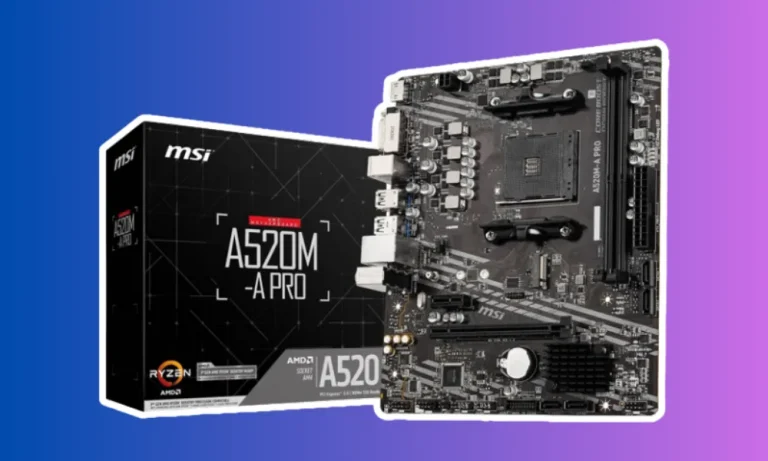How to Enter BIOS on an Asus Motherboard?
Are you looking to access the BIOS on your Asus motherboard but not sure how? Don’t worry, we’ve got you covered! In this guide, we’ll walk you through the simple steps to enter the BIOS, which is like the control center for your motherboard.
Whether you need to troubleshoot hardware issues or tweak settings, we’ll make it easy for you. So, let’s dive in and unlock the power of your Asus motherboard!
Why Access BIOS on an Asus Motherboard?
To truly unleash the potential of your Asus motherboard, it’s important to know how to access the BIOS.
The BIOS provides a gateway to a world of customizations and settings that can enhance your overall computing experience.
Troubleshooting Hardware Issues Accessing the BIOS can be immensely helpful when troubleshooting hardware problems. By navigating through the BIOS interface, you can check hardware configurations, monitor temperatures, and identify potential issues.
This can aid in diagnosing problems such as faulty memory modules, overheating components, or incompatible hardware configurations.
Overclocking and Performance Boost If you’re an enthusiast seeking to push your system’s performance limits, the BIOS is where the magic happens.
Overclocking, the process of running your hardware at higher speeds than the manufacturer’s specifications, can be achieved through BIOS settings.
This allows you to squeeze out that extra bit of power from your CPU, GPU, and RAM, resulting in improved performance for demanding tasks like gaming or video editing.
Changing Boot Order Sometimes, you may need to change the boot order of your system.
For example, if you want to boot from a USB drive to install a new operating system or run a diagnostic tool, accessing the BIOS is essential. Within the BIOS interface, you can easily modify the boot order, prioritizing the devices from which your system should boot.
4 Steps to Enter BIOS on an Asus Motherboard
Entering the BIOS on an Asus motherboard is a straightforward process that grants you access to a world of customization and configuration options.
1. Start the Computer and Press the Designated Key To begin, start your computer and be ready to press a specific key during the boot process. This key allows you to access the BIOS settings. Keep in mind that the key you need to press may vary depending on your Asus motherboard model.
2. List of Common Keys Here is a list of commonly used keys that can help you enter the BIOS on Asus motherboards:
- F2: This is the most common key to access the BIOS on Asus motherboards.
- Delete: Some Asus motherboards may require you to press the Delete key.
- F10 or F8: Depending on the motherboard model, these keys can also be used to enter the BIOS.
3. Specific Key Varies It’s important to note that the specific key required to enter the BIOS may vary depending on the model of your Asus motherboard. To determine the correct key for your specific motherboard model, you can refer to the user manual or the Asus website for detailed instructions.
4. Access BIOS from Within Windows Alternatively, you can also access the BIOS from within the Windows operating system. Simply go to the Start menu, click on “Settings,” then select “Update & Security.” From there, navigate to the “Recovery” tab and click on “Restart Now” under the “Advanced Startup” section. This will restart your computer and present you with the option to enter the BIOS.
Navigating the BIOS Interface
Once you’ve successfully entered the BIOS on your Asus motherboard, you’ll find yourself in a powerful and customizable interface.
Understanding the layout and options available in the BIOS can help you make the most out of your system.
Layout and Options The BIOS interface typically consists of a menu-driven system with various options and settings. These settings are organized into different sections, allowing you to customize different aspects of your motherboard and system.
The layout may vary depending on the motherboard model, but you’ll often find options related to boot settings, hardware configurations, security settings, and more.
Navigation Keys To move through the settings in the BIOS, you’ll primarily use the arrow keys on your keyboard. The up and down arrow keys are used to navigate between different options, while the left and right arrow keys can be used to access submenus or modify values within a particular setting.
Additionally, the Enter key is used to select an option or enter a submenu, and the Esc key is typically used to exit a submenu or go back to the previous screen.
Important Sections Within the BIOS interface, there are several important sections that you should pay attention to. These include:
- Boot Options: This section allows you to modify the boot order of your system, prioritize different devices, or enable features like Fast Boot.
- Hardware Configurations: Here, you can customize various hardware settings, such as memory timings, CPU settings, and fan controls.
- Security Settings: This section enables you to set up password protection, secure boot options, and other security-related configurations.
FAQs
What should I do if pressing the “Delete” key doesn’t work?
If pressing the “Delete” key doesn’t work, try pressing the “F2” key or the “F10” key instead. Some Asus motherboards may have different key combinations to access the BIOS. Refer to your motherboard’s user manual or the Asus website for specific instructions.
Can I access the BIOS from within the operating system?
No, the BIOS is a pre-boot environment and cannot be accessed from within the operating system. You need to restart your computer and access the BIOS during the boot process.
How can I make sure I don’t accidentally modify critical settings in the BIOS?
It’s always a good practice to take note of your current settings before making any changes in the BIOS. This allows you to revert back to the original settings if needed. Additionally, exercise caution and refer to the user manual or Asus support for guidance when making changes.
Are there any risks involved in accessing the BIOS?
Accessing the BIOS itself does not pose any significant risks. However, making incorrect changes to settings without proper knowledge can lead to system instability or compatibility issues. It’s crucial to understand the implications of any changes you make and proceed with caution.
Conclusion
Entering the BIOS on an Asus motherboard is a straightforward process that can unlock a world of customization options for your system.
By following the steps outlined in this guide, you can access the BIOS interface, navigate through its menus, and take advantage of its features to optimize your system’s performance and functionality. Get ready to dive in and unleash the full potential of your Asus motherboard!






